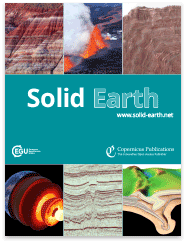
Bockheim, J. G. 2013. Paleosols in the Transantarctic Mountains: indicators of environmental change. Solid Earth 4, 451-459. DOI: 10.5194/se-4-451-2013
Abstract
The Transantarctic Mountains (TAMs), a 3500 km long chain that subdivides East Antarctica from West Antarctica, are important for reconstructing the tectonic, glacial, and climatic history of Antarctica. With an ice-free area of 24 200 km2 (50% of the total in Antarctica), the TAMs contain an unusually high proportion of paleosols, including relict and buried soils. The unconsolidated paleosols range from late Quaternary to Miocene in age, the semi-consolidated paleosols are of early Miocene to Oligocene age, and the consolidated paleosols are of Paleozoic age. Paleosols on unconsolidated deposits are emphasized in this study. Examples are given from the McMurdo Dry Valleys (78° S) and two outlet glaciers in the central and southern TAMS, including the Hatherton–Darwin Glacier region (80° S) and the Beardmore Glacier region (85°30′ S). Relict soils constitute 73% of all of the soils examined; 10% of the soils featured burials. About 26% of the soils examined are from the last glaciation (< 117 ka) and have not undergone any apparent change in climate. As an example, paleosols comprise 65% of a mapped portion of central Wright Valley. Paleosols in the TAMs feature recycled ventifacts and buried glacial ice in excess of 8 Ma in age, and volcanic ash of Pliocene to Miocene age has buried some soils. Relict soils are more strongly developed than nearby modern soils and often are dry-frozen and feature sand-wedge casts when ice-cemented permafrost is present. The preservation of paleosols in the TAMs can be attributed to cold-based glaciers that are able to override landscapes while causing minimal disturbance.
Solid Earth (SE) is an international scientific journal dedicated to the publication and discussion of multidisciplinary research on the composition, structure and dynamics of the Earth from the surface to the deep interior at all spatial and temporal scales. More at Solid Earth hompage.
